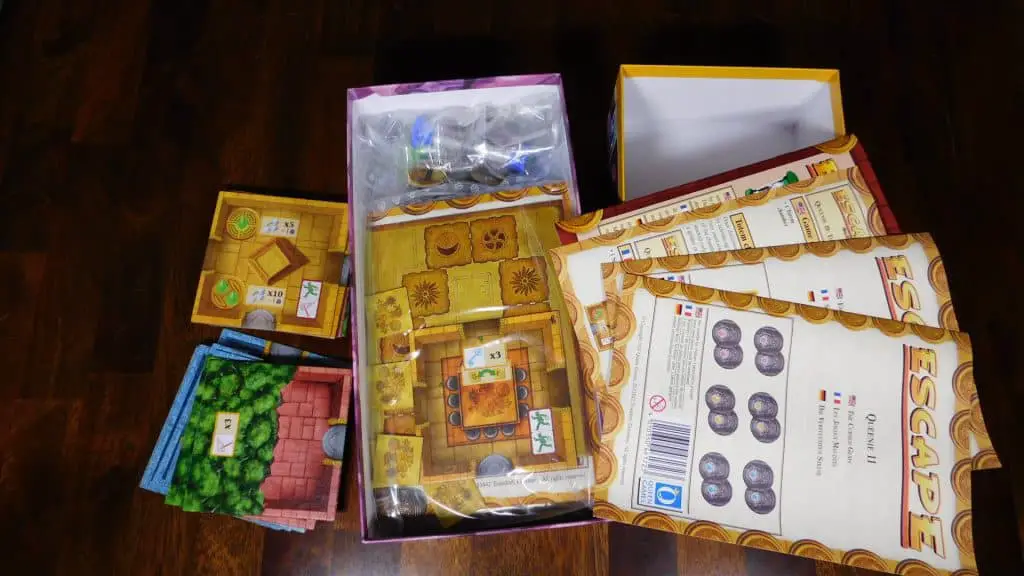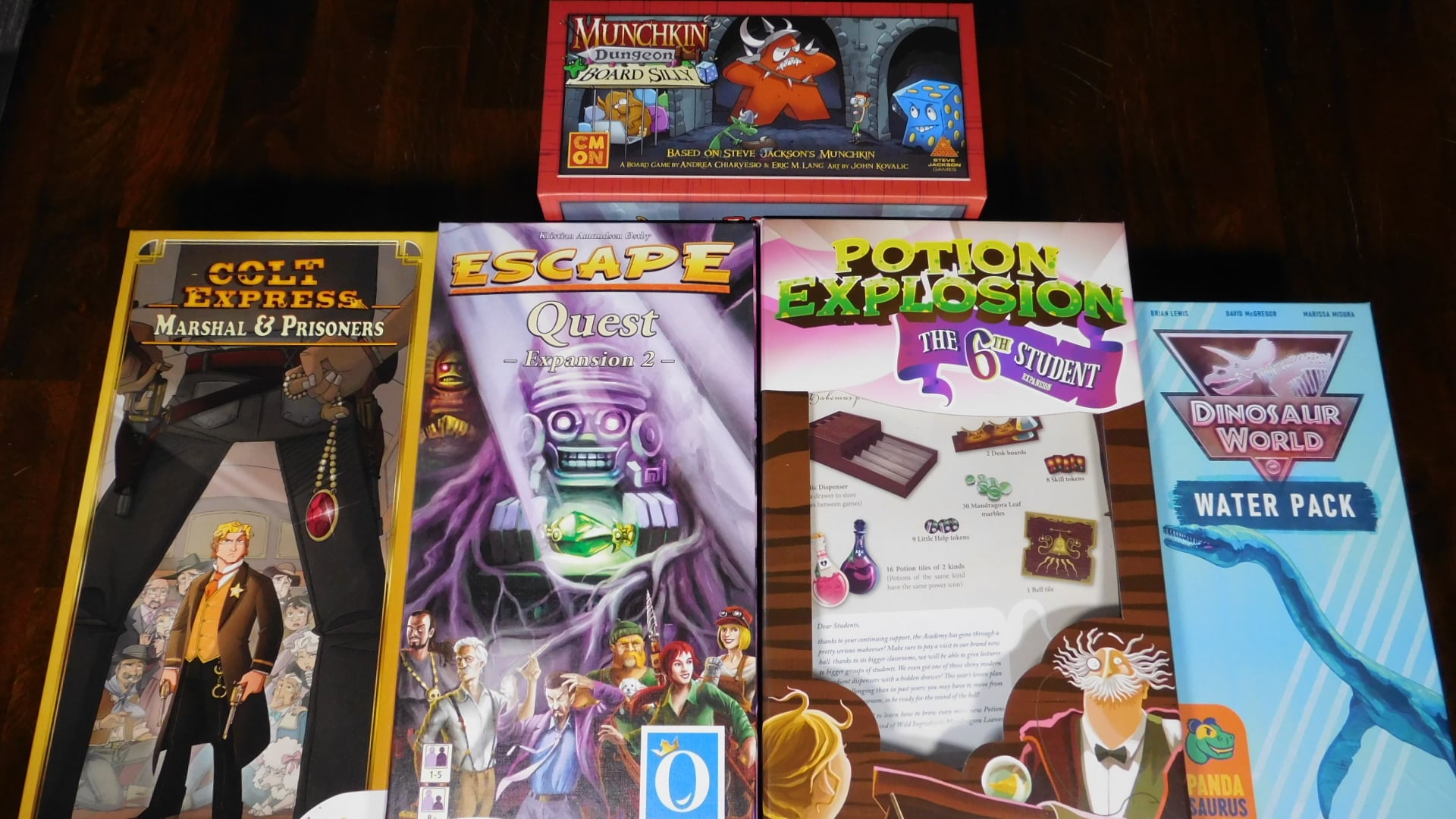Introducing an expansion reminds me of writing: we can get in such a rush to get there that we forget to do it properly. There’s an art and science to introducing expansions for board games. So, what is the art and science of how to introduce expansions into a board game?
When it comes to how to introduce expansions into a board game, the best things to do are to introduce the expansion when you feel like it’s a good time to do so, to introduce the expansions one at a time if there is more than one, and to introduce them only to players who have played the base game.
Table of Contents
What Are Board Game Expansions?

Board game expansions are extra content for a board game. They can be extra maps, characters, scenarios, items, new rules, or all of the above and more.
What Are The Types Of Board Game Expansions?
There are regular board game expansions that come with enough content to change the game to make it feel new again. There are also standalone expansions which are expansions that can be played without the base game or, depending on the expansion, sometimes with the base game.
In addition, there are mini-expansions, which only come with a few components such as cards or tokens. Plus, there are promo expansions, which are promo components that are usually given out at conventions or as part of pre-orders. Sometimes they’re sold online too through the company’s website that makes the game.
What Are Some Examples Of Board Game Expansions?
There are far too many board game expansions to list here. However, here are some to get you started:
- Clank!: Sunken Treasures
- Mysterium: Hidden Signs
- Architects Of The West Kingdom: Works Of Wonder
- Mansions Of Madness 2nd Edition: Path Of The Serpent
- Once Upon A Time: Knightly Tales
- Unearth: The Lost Tribe
- Call To Adventure: The Name Of The Wind
- Jamaica: The Crew
- Blood Rage: Mystics Of Midgard
Does Every Board Game Have An Expansion?
No, not every board game will have an expansion. And, to be honest, many of them don’t need to. They’re the complete package without them, and they’re a lot of fun.
Plus, there is such a thing as board game bloat, which is when there’s so much content for a game it becomes overwhelming. So, it’s not always good to have more than less when it comes to board game expansions.
Is There Such A Thing As A Bad Board Game Expansion?
Oh yeah, definitely. I can’t think of any off the top of my head, but they’re out there. Sometimes a board game expansion just makes a game too weird, and difficult or takes it too far away from what it used to be.
That last example is the type of expansion I like the least, although I can’t recall any now. If I like a game, then I definitely want more content for it, but not content that changes what I liked about the game in the first place so much that it’s unrecognizable.
Do I Need To Get Board Game Expansions?
Only for 1 of 2 reasons. The first reason is if you’re a collector. If you are, then getting expansions is just going to be part of collecting board games.
The second reason is if you want a way to freshen up a board game. Maybe you’ve played it a lot and are enjoying it, or it’s starting to get a bit old. Either way, board game expansions help give a board game new life.
How Do I Introduce Expansions Into A Board Game?
There are 3 things you should do when you introduce expansions into a board game: only do it when the time is right, do it 1 at a time if you have more than 1 to introduce, and do it with players who have already played the base game. Let’s start with doing it when the time is right.
Introduce Expansions Into A Board Game When The Time Is Right
At this point, you’re probably wondering, “Okay, so what’s the right time, Patrick?” Well…there’s no one good answer to this. So…I’m sorry, haha.
What I can tell you is that there’s a feeling when the time is right. This isn’t some mystical nonsense. Every board game group and every board game is different, which means there are different right times for different situations.
For example, maybe you’re playing Small World with your family. When do you introduce an expansion? Right around the time your kid, or kids, says, “I’m getting bored.” Imagine the excitement when they realize the next time they play it, there’ll be something new to have fun with!
As another example, imagine you’re playing Scythe with your friends. Now imagine you’re all dedicated to learning and playing this game. When do you introduce an expansion?
When it’s time to add a little spice to the competition.
The right time is different for each game, each group, and each situation. But as you play more and more games with more and more groups of people, you’ll start to figure out what the right time is a little more quickly each and every time you need to.
Introduce Expansions Into A Board Game 1 At A Time If There’s More Than 1 To Introduce
Some games have more than one expansion. Mysterium has 2, Machi Koro has 2, Scythe has 3, and Marvel Legendary has a billion.
That’s an exaggeration about Marvel Legendary, but seriously, Marvel Legendary has about 32 expansions. 32! You do not want to introduce all of those at once. Or even a couple of those at once.
Introduce expansions one at a time and let yourself and the other players get used to playing the game with that expansion. See how you like it, see how it changes the game, and then add another one when the time is right (see what I did there?).
Do This Only With Players Who Have Played The Base Game
You do not want to introduce expansions into a board game with players who haven’t even played the base game. There are exceptions to this such as if the base game and expansions are really easy to teach and learn, but these exceptions are rare.
As a best practice, you’ll want to treat an expansion like it completely changes the base game even if that’s not what it does. In other words, when you introduce an expansion into a board game you might as well be teaching the players a whole new game.
So, with that in mind, only introduce expansions into a board game with players who are familiar with the base game.
Did You Know?
(Each time you refresh the page you will get a new “Did You Know” fact!)
Did you know some of the items in Clue aren’t actually weapons? What do I mean? To find out, check out this article here!
Conclusion: How To Introduce Expansions Into A Board Game
So, there you have it, the best ways how to introduce expansions into a board game. Plus, a bit more.
What do you think though? Do you have another idea for how to introduce expansions into a board game or a way you’d like to try the most? Let me know your thoughts and why in the comments below!
And, as always, keep on gaming, fellow board gamers.
And, as always, keep on gaming, fellow board gamers.

